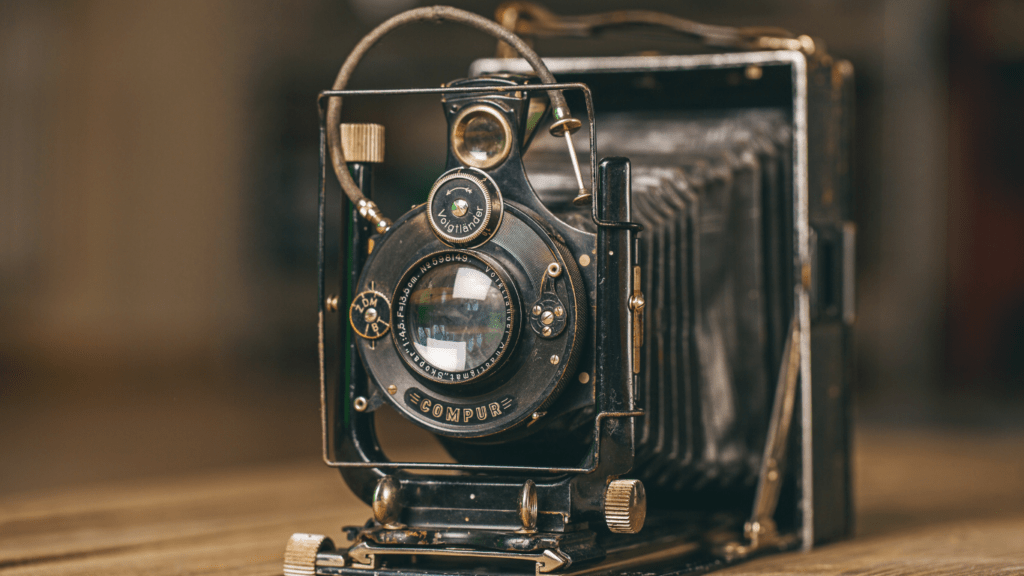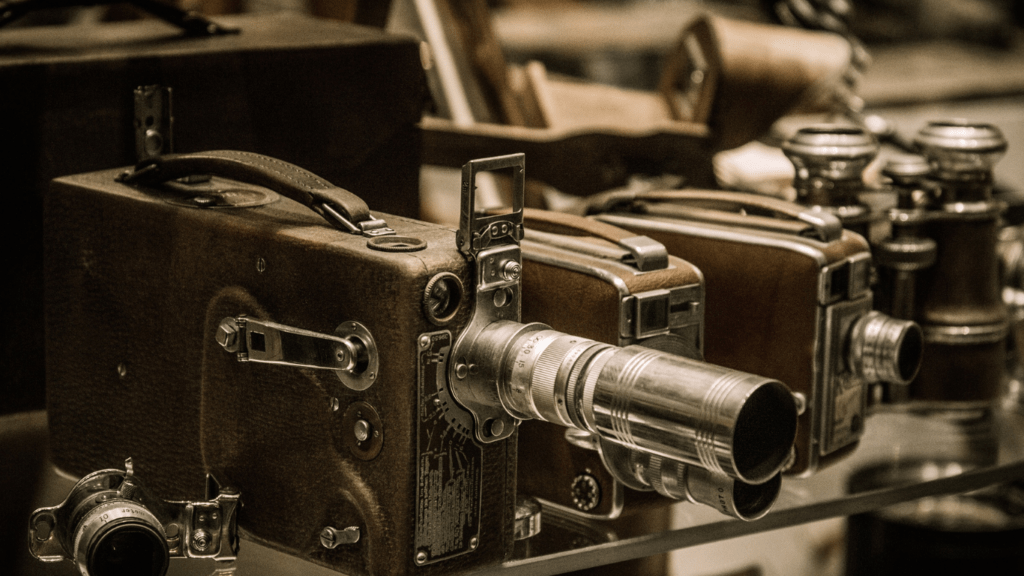Photography’s constantly evolving, but there’s something magical about revisiting the roots of the craft. Lately, I’ve noticed a growing trend among photographers—dusting off classic techniques and breathing new life into them. From film photography to darkroom processes, these timeless methods are making a bold return in today’s digital world.
Exploring the Resurgence of Classic Photography Techniques
Film photography is at the forefront of this resurgence. I see photographers favoring 35mm and medium format films for their distinct grain, dynamic range, and vibrant color reproduction. Brands like Kodak and Fujifilm have reintroduced iconic film stocks to meet growing demand, reinforcing this revival.
Darkroom processes are gaining renewed interest. Many photographers are rediscovering the satisfaction of developing prints manually. Techniques like dodging, burning, and split toning, which were cornerstones of classic darkroom work, are now being embraced to achieve precise artistic expression.
Alternative processes are also becoming popular. Cyanotype, platinum printing, and tintypes, which date back to the 19th century, are being reimagined with modern tools. These methods add texture and authenticity to images, offering results far removed from digital editing.
Hybrid workflows integrate old and new. By scanning negatives, I can blend film photography with advanced editing software like Lightroom or Photoshop. This combination maintains analog character while benefiting from digital precision, appealing to enthusiasts and professionals alike.
The tactile nature of classic techniques is key to their resurgence. Handling physical negatives or prints connects me to the craft in a way that digital processes can’t replicate. This tangible element is drawing many photographers back to these timeless methods.
Film Photography: The Revival of Analog Charm
Film photography is witnessing a remarkable resurgence as photographers seek authenticity and depth in their work. Its analog charm offers unmatched qualities that resonate in a fast-paced digital era.
Key Benefits of Shooting with Film
Film captures dynamic range and color depth that digital sensors often struggle to replicate. The chemical properties of film produce rich tones and natural gradients, ideal for portraits and landscapes. Additionally, film encourages intentionality since every shot must be carefully composed due to limited exposures. This deliberate approach fosters creativity and hones technical skills.
Film negatives provide physical archives, ensuring longevity and accessibility even decades later. Unlike digital formats that depend on evolving technology, film negatives remain resilient against obsolescence. Many professionals value the tactile process of developing and printing as it deepens their engagement with the craft.
Popular Film Cameras Making a Comeback
Iconic film cameras from brands like Leica, Nikon, and Pentax are seeing renewed interest. The Leica M6, revered for its precision and durability, is especially popular among street photographers. Nikon’s F2, a trusted choice in its era, offers mechanical reliability and versatility for various genres.
Medium format cameras, including the Mamiya RB67 and Pentax 67, are favored for their ability to produce exceptional detail and shallow depth of field. Instant cameras like the Polaroid SX-70 have also returned, appealing with their unique aesthetic and immediate prints. These cameras not only evoke nostalgia but also offer tools for creating stunning visual stories today.
Darkroom Development: Rediscovering the Art of Manual Processing
Darkroom development is regaining traction as photographers are revisiting manual techniques to create tangible, expressive prints. These processes, once considered outdated, now offer an unmatched depth and connection to the art form.
Essential Tools for Modern Darkrooms
Modern darkrooms blend traditional equipment with contemporary updates, enabling precision and convenience. Key tools include:
- Enlargers: Devices like the Beseler 23CIII-XL allow photographers to project film negatives onto photographic paper, enabling precise control over image size and exposure.
- Safelights: Red or amber safelights ensure visibility while preserving light-sensitive paper during handling and exposure.
- Chemical Trays and Tongs: Plastic or stainless steel trays hold developer, stop bath, and fixer solutions required for sequential processing of prints.
- Timers: Digital or analog timers maintain consistent exposure and development times, enhancing accuracy.
- Ventilation Systems: Proper air circulation ensures safety by mitigating risks from chemical fumes.
Additional tools like grain magnifiers, paper cutters, and archival washers improve the workflow while maintaining the authenticity of the process.
Why Photographers are Embracing Darkroom Techniques
Darkroom techniques offer a tactile experience unmatched by digital methods. Many photographers value the artistic control these processes provide, from dodging and burning to variant toning. The ability to manipulate prints by hand fosters creativity and ensures each piece is unique.
Manual processing encourages slower, more deliberate workflows, reinforcing attention to detail. Photographers often describe the process as meditative, making it a rewarding complement to the fast pace of digital editing.
Darkroom-developed prints also possess a distinct depth, texture, and tonal quality that digital outputs struggle to replicate. Photographers using techniques like split-grade printing achieve nuanced contrasts, enriching the narrative of their work. In addition, the switch to environmentally responsible darkroom chemicals appeals to sustainability-conscious creators, expanding its relevance in today’s industry.
Vintage Lenses: Adding Character to Digital Shots

Vintage lenses bring a distinctive quality to modern photography, offering characteristics that contemporary lenses often lack. Their imperfections and unique renderings can create unparalleled visual appeal.
Unique Features of Classic Lenses
Classic lenses deliver unique optical traits that distinguish them from modern glass. Many older lenses possess intentional or unintentional flaws like chromatic aberration, spherical distortion, or vignetting, which add personality to images. For instance, lenses like the Helios 44-2 are prized for their swirling bokeh, while others like the Zeiss Planar 50mm f/2 offer creamy backgrounds and sharp foregrounds.
The manual focus mechanism in vintage lenses enhances control over composition, offering tactile feedback unmatched by autofocus. Older optical designs often yield softer contrasts or more gradual tonal transitions, particularly in highlights and shadows. These qualities give a nostalgic or dreamlike feel to photos, ideal for portraiture and artistic projects.
The robust build of vintage lenses stands out compared to many plastic-bodied modern counterparts. Made with metal components, lenses like the Nikkor AI-S series often last decades, preserving both their function and aesthetic.
Tips for Using Vintage Lenses with Modern Cameras
- Combining vintage lenses with digital cameras requires adapting physical mounts and optimizing settings for better performance.
- I recommend selecting a reliable lens adapter, such as those from brands like Fotodiox or Metabones, to bridge compatibility between the lens mount and your camera body.
- Since vintage lenses lack autofocus, I rely on the focus peaking feature available on most mirrorless cameras, ensuring precise focus. Stopping down the aperture slightly helps increase sharpness if lens softness is too pronounced wide open.
- I also experiment with white balance adjustments to reduce any color casts common in older lenses.
- Pay close attention to sensor crop factors. Using a lens with a full-frame design on an APS-C sensor alters the effective focal length, often by a factor of 1.5 or 1.6, enhancing versatility for specific compositions such as tighter portraits while reducing the field of view.
Black and White Photography: Timeless Elegance in a Digital Age
Black and white photography remains a cornerstone of artistic expression, blending simplicity with emotional depth. Even in today’s digitally dominated photography scene, this classic style continues to captivate both photographers and viewers.
Mastering Monochrome in Photography
Creating striking monochrome images requires understanding light, texture, and contrast. I rely on natural light or dramatic artificial setups to enhance tonal variations. Highlights and shadows carry more weight in black and white compositions, so visualizing how colors translate into grayscale is essential.
I also focus on strong subject matter and composition. Architectural lines, portraits with deep emotions, and landscape patterns lend themselves beautifully to this medium. Paying attention to the interplay of textures, from rough stone surfaces to soft fabric folds, strengthens the impact. Tools like a calibrated light meter or in-camera metering modes refine exposure for monochrome shots, avoiding underexposed shadows or overblown highlights.
Digital Techniques for Authentic Black and White Effects
Modern software enables precise black and white conversion with tools like Adobe Lightroom and Capture One. I adjust luminance levels in each color channel to mimic the tonal richness of film photography, refining details without losing depth. Advanced controls for dodging, burning, and clarity bring targeted adjustments, ensuring the image tells a compelling story.
Using film-inspired presets or custom curves replicates the aesthetic of classics like Kodak Tri-X or Ilford HP5. Grain adjustments can evoke the tactile feel of traditional film stocks. For greater authenticity, I experiment with digital cameras’ dedicated monochrome modes or pair modern mirrorless cameras with vintage lenses to achieve organic tonal shifts.
When crafting black and white imagery, blending these techniques combines old-world elegance with the precision of modern tools.
Pinhole Cameras: A Simplistic Approach to Creativity
Pinhole photography represents one of the oldest methodologies in capturing images, offering a purely analog experience. Recently, it has gained traction among photographers seeking simplicity and creative expression in an age dominated by complex digital tools.
How Pinhole Photography is Gaining Popularity
Pinhole photography is increasingly favored for its ability to produce distinctive, ethereal images. Its soft focus, infinite depth of field, and unique distortions appeal to artists exploring unconventional aesthetics. As it requires no lens, this technique encourages photographers to rethink composition and rely solely on light and perspective, fostering more intentionality in their process.
Contemporary photographers are integrating pinhole techniques into fine art projects, embracing its imperfections as part of their artistic vision. Events like Worldwide Pinhole Photography Day spotlight this resurgence, encouraging both novices and experts to experiment. Additionally, with environmental concerns influencing photography, the minimalistic and chemical-free nature of pinhole imaging aligns with sustainable practices.
Building Your Own Pinhole Camera
Creating a pinhole camera involves basic materials and straightforward steps, making it accessible for anyone interested. Using items like cardboard boxes, aluminum cans, or tins, photographers can construct a functional camera with ease. Essential components include a light-tight container, a small pinhole (punched in metal or foil), and a surface to hold light-sensitive material, such as photographic paper or film.
For optimal results, careful measurements and precise placement of the pinhole are critical. Calculating the focal length and pinhole diameter ensures sharpness and desired exposure. This DIY approach not only offers a rewarding creative experience but also deepens understanding of photographic fundamentals. Digital enthusiasts are even adapting pinhole cameras for modern gear, combining tradition with innovation.




